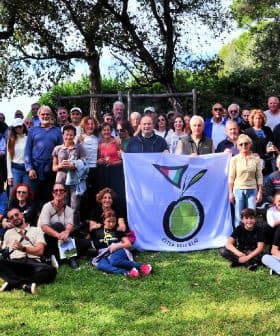 5.4K reads
5.4K readsHealth
Common Olive Pomace Compound Demonstrates Anticancer Potential

Researchers at the University of Granada have developed nanoparticles of maslinic acid, a natural compound derived from olive oil production waste, which show potential in combating various cancers. The team’s approach aims to enhance effectiveness and broaden the applications of maslinic acid in oncology, offering a promising tool in the fight against cancer with reduced side effects and increased selectivity.
Researchers at the University of Granada have developed nanoparticles of maslinic acid, a natural compound derived from olive oil production waste.
These nanoparticles exhibit remarkable potential in combating various cancers, including breast, colon, pancreatic and prostate. The team’s approach aims to enhance effectiveness and broaden the maslinic acid applications in oncology.
This is a major leap forward in the search for new therapeutic strategies that produce fewer side effects and that are more selective in the fight against these two types of cancer (breast and pancreatic).
Maslinic acid is a naturally occurring compound extracted from the byproducts of olive oil production. It boasts a range of significant health benefits, making it a valuable candidate for medical research.
Among its notable attributes, maslinic acid demonstrates potent antioxidant properties, shielding the body from oxidative stress and mitigating the risk of diseases associated with oxidative damage, such as cardiovascular conditions, cancer, and premature aging.
See Also:Health NewsIn addition, maslinic acid exhibits anti-inflammatory effects and is an effective antimicrobial agent against various bacteria and fungi.
This antimicrobial activity aids in combating infections and inhibiting the proliferation of harmful microorganisms within the body. However, maslinic acid’s most distinguishing feature lies in its potential to fight cancer.
Laboratory tests on cells revealed maslinic acid’s promising role as a cancer cell growth inhibitor, promoting programmed cell death (apoptosis) in multiple cancer types, including breast, colon and prostate cancer.
Maslinic acid
Maslinic acid, derived from dry olive pomace, a byproduct of olive oil production, belongs to the triterpene group known as oleananes. This bioactive compound shows promise in various aspects of health. It inhibits serine proteases crucial for HIV spread, displays anti-cancer properties against colon cells, and enhances glutamate reuptake, potentially reducing nerve cell damage. With its antioxidative effects against harmful reactive species and the ability to curb inflammation, maslinic acid may support protein synthesis, growth, and joint health. It also serves as a glycogen phosphorylase inhibitor, increasing glycogen storage in the liver.
It also impedes angiogenesis, the process by which new blood vessels nourish tumors. Due to its versatility and therapeutic potential, maslinic acid has garnered substantial interest in the medical and healthcare sectors. Nevertheless, its practical application has been limited due to its low water solubility, measuring at a mere 3.6 micrograms per liter.
The breakthrough the University of Granada researchers achieved involves engineering nanoparticles that significantly enhance maslinic acid’s solubility in aqueous solutions, surpassing one million times its original solubility.
This critical advancement enables the compound’s utilization across various fields. Moreover, these nanoparticles are designed to transport other water-insoluble drugs within them, resulting in a dual antitumor effect – a combination of the maslinic acid’s inherent properties and the potency of the encapsulated drug. This innovation holds great promise for enhancing the efficacy of cancer treatments.
The resulting nanoparticles have a size ranging between 120 and 160 nanometers, exhibit uniform dispersion and remarkable stability and retain their properties for up to six months when stored.
Cell-based assays demonstrated the cytotoxic activity of these nanoparticles against breast and pancreatic cancer cell lines, with lower toxicity observed in healthy cells (fibroblasts).
Additionally, the rapid internalization of these nanoparticles by cancer cells was observed, demonstrating their capacity to transport widely used chemotherapy drugs for pancreatic and breast cancer – paclitaxel and docetaxel, respectively.
Experiments on mice verified the nanoparticles’ non-toxic nature and suitability for intravenous and oral administration.
Notably, oral administration is preferred by patients due to its high acceptability. These nanoparticles are formulated with a polymeric shell that permits the attachment of targeting molecules, facilitating a more selective antitumor treatment, specifically targeting tumor cells while sparing healthy ones.
“We have seen that these nanoparticles, whether administered intravenously or orally, are all able to reach the different organs in the body,” said Juan Antonio Marchal Corrales, a researcher at the University of Granada and co-author of the study. “And, with proper targeting, we could target them directly to tumor cells, but not healthy cells.”
“This is a major leap forward in the search for new therapeutic strategies that produce fewer side effects and that are more selective in the fight against these two types of cancer, mainly triple-negative breast cancer and pancreatic cancer, which are cancers with a high mortality rate,” he added.
This system extends the potential applications of maslinic acid across various domains. These nanoparticles can be combined with different drugs and tailored to suit specific treatment requirements in cancer treatment. This versatility positions the nanosystem as a potent tool in the ongoing battle against cancer.










